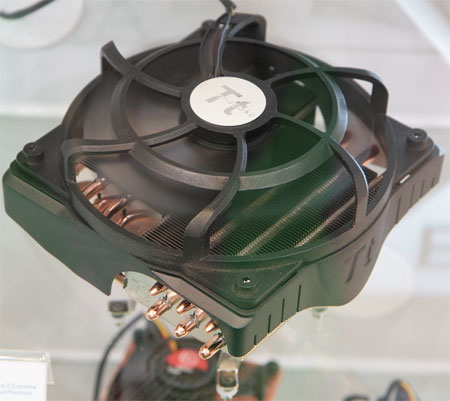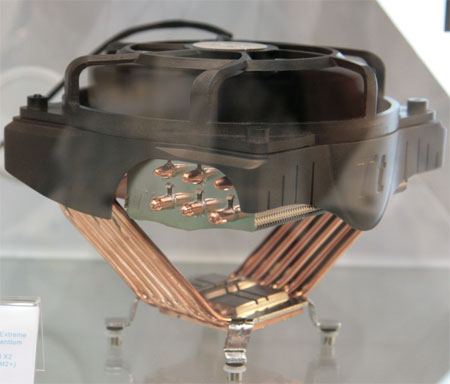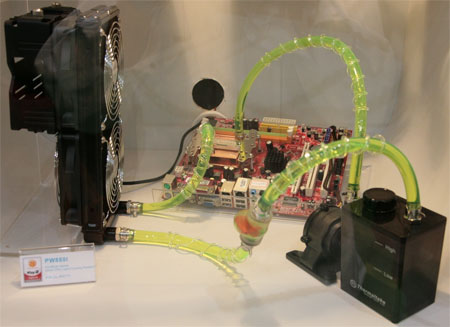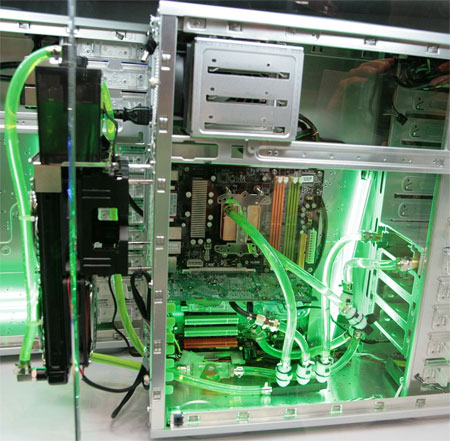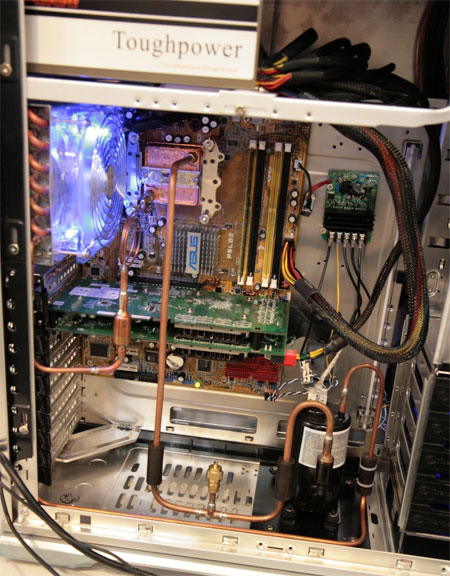CeBIT 2008: Thermaltake's secret weapon
When it came to cooling systems, Thermaltake had quite a few interesting thing to show. Air cooling wise, the manufacturer promoted 14 cm fans with two new models: the V14 Pro and the BigTyp 14 (the latter had already been seen at the CES). The first model, very wide, uses 6 heat pipes to send heat on the two copper heat sinks that aren’t that thick, but that are wide. In between is the fan that is placed vertically, a la Zalman CNPS. It’ll easily evacuate the casing’s hot air but will provide only a small air flow to the chipset and the processor’s power supply stages. On the opposite, the BigTyp 14 and its six heat pipes in U will handle this well and should have better overall performances for the processor. Both air cooling systems should be available in a month.
(Compare Prices on Thermaltake Cooling Fans)
When it came to watercooling, the main innovation came with the PW880i, a complete kit that not only allows the setup of a heat sink outside the case, but also at a distance from the case’s back fan that send its hot air. Remember that the purpose of this idea, inaugurated by Swiftech, is to allow ambient air, cooler than the air inside the case, to cool the heat sink. This is also solves the problem of space (especially that the pump can be installed right above it) when it comes to a double 2 x 12 cm heat sink, which takes space and it helps not to pollute the casing’s air with the heat generated by the sink.
Finally, the manufacturer allowed certain members of the press the privilege to eye a project in development that it likes to call its "secret weapon". It’s a prototype using a compressor. AS on the nVentiv Prometeia or the Asetek Vapochill (or more commonly on your fridge), we thus find a compressor at the heart of this cooling unit. It’ll compress a gas, thus elevating its temperature far beyond its ambient one, then cool it through a heat sink - fan module before unstretching it, obtaining a lower temperature. The only peculiar thing: the compressor’s size and thus its performances are quite modest compared to what we usually find, which isn’t a good sign. The rest of the circuit resembles more a classical watercooling than a compressor circuit. The completed product is expected in June for a price and performances unknown.
Get Tom's Hardware's best news and in-depth reviews, straight to your inbox.
Tom's Hardware is the leading destination for hardcore computer enthusiasts. We cover everything from processors to 3D printers, single-board computers, SSDs and high-end gaming rigs, empowering readers to make the most of the tech they love, keep up on the latest developments and buy the right gear. Our staff has more than 100 years of combined experience covering news, solving tech problems and reviewing components and systems.

